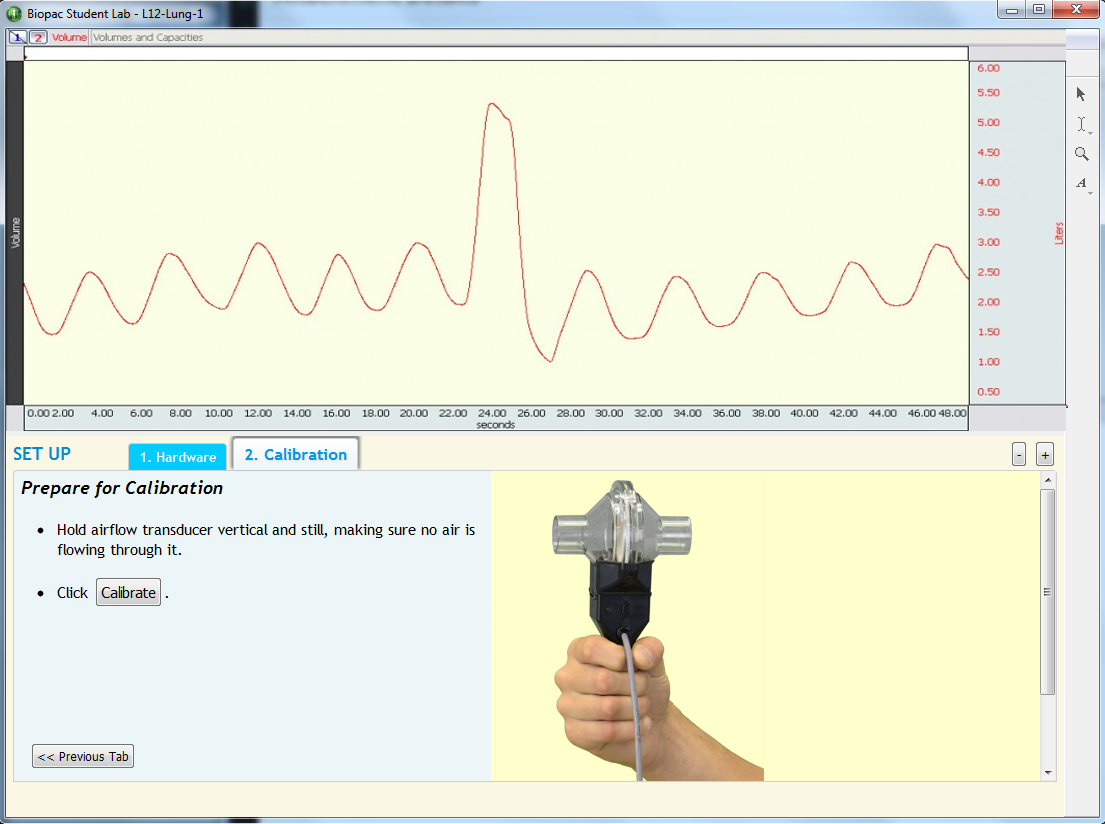L12 Pulmonary Function I

This BSL lesson provides an excellent introduction to pulmonary volumes and capacities, and pulmonary function tests. Students use a hand-held airflow transducer to record their own data. The lesson will automatically calculate and display both the airflow and volume signals.
Students perform a variety of pulmonary measurements such as: Tidal volume, Inspiratory capacity, Expiratory capacity, Functional residual capacity, Vital capacity and Total lung capacity.
Experimental Objectives
-
To observe experimentally, record and/or calculate selected pulmonary volumes and capacities.
-
To compare the observed values of volume and capacity with average values.
-
To compare the normal values of pulmonary volumes and capacities of subjects differing in sex, age, weight, and height.
Tasks Performed by the Student
BSL Lessons are designed to allow at least four students to record and save data in a normal lab period (60-90 minutes). Typically, labs work most efficiently with three or more students working together at each BSL station.
- Record airflow.
- Breathe normally for five complete respiratory cycles.
- Inhale as deeply as they can.
- Breathe normally for a further five respiratory cycles.
- Exhale completely.
- Resume normally breathing for three cycles.
Videos
BSL 4 L12 Pulmonary Function | Optional Calibration
BSL 4 L12 Pulmonary Function | Recording
Biopac Student Lab Student Download
Lesson Hardware
This lesson requires a Biopac Student Lab (BSL) System and the following hardware. If your BSL System does not include all hardware items, expand your system by selecting required items below. For more details, review the Lesson: L# BSL Lessons - see the Lab Manual or launch BSL; A# and H# BSL PRO Lessons, click the PDF link above to review full setup, recording, and analysis procedures.
| Item | Name | Cart |
|---|---|---|
| Select Option | Airflow Transducer | Add to Cart |
| AFT2 | Disp. Mouthpiece, 22 mm 10/pk | Add to Cart |
| AFT3 | Disp. Noseclip, 10/pk | Add to Cart |
Stay Connected